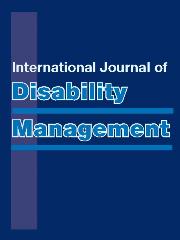Article contents
Inclusion at the Workplace: An Exploratory Study of People with Disabilities in South Africa
Published online by Cambridge University Press: 26 October 2020
Abstract
Research on the employment experiences of persons with disabilities on a global level indicates that this group is faced with the challenge of inclusion in the workplace. While South Africa has a well-defined legislative framework that has been determined in consultation with disabled people’s organisations, compliance with legislation appears to have failed to ensure that employment targets are met. As a response to these challenges, this study explored the early inclusion experiences of persons with disabilities in the workplace via a qualitative, explorative, case study. Semi-structured interviews were conducted with 12 people with a range of different disabilities and working for different organisations, in order to provide insight into the initial experiences of inclusion for persons with disabilities in the workplace. Findings showed challenges in induction and orientation practices, struggles with disclosure of disability to coworkers, a desire to strive for ‘normality’, and frustration and vulnerability in the workplace. Taken together, the findings point to the importance of early experiences of inclusion in the workplace – that is, inclusionary practices during the employee induction phase. This study offers insights to organisations and management practitioners for the promotion of better employment experiences. Recommendations include the appointment of a disability champion to account for disability equity within the organisation, the development of more inclusive recruitment and orientation practices, drawing on coworkers for support, and the active involvement of persons with disabilities in shaping onboarding processes. Embarking on these steps may ultimately result in a more diverse workforce within South Africa.
- Type
- Article
- Information
- Copyright
- © The Author(s), 2020. Published by Cambridge University Press
References
- 12
- Cited by


